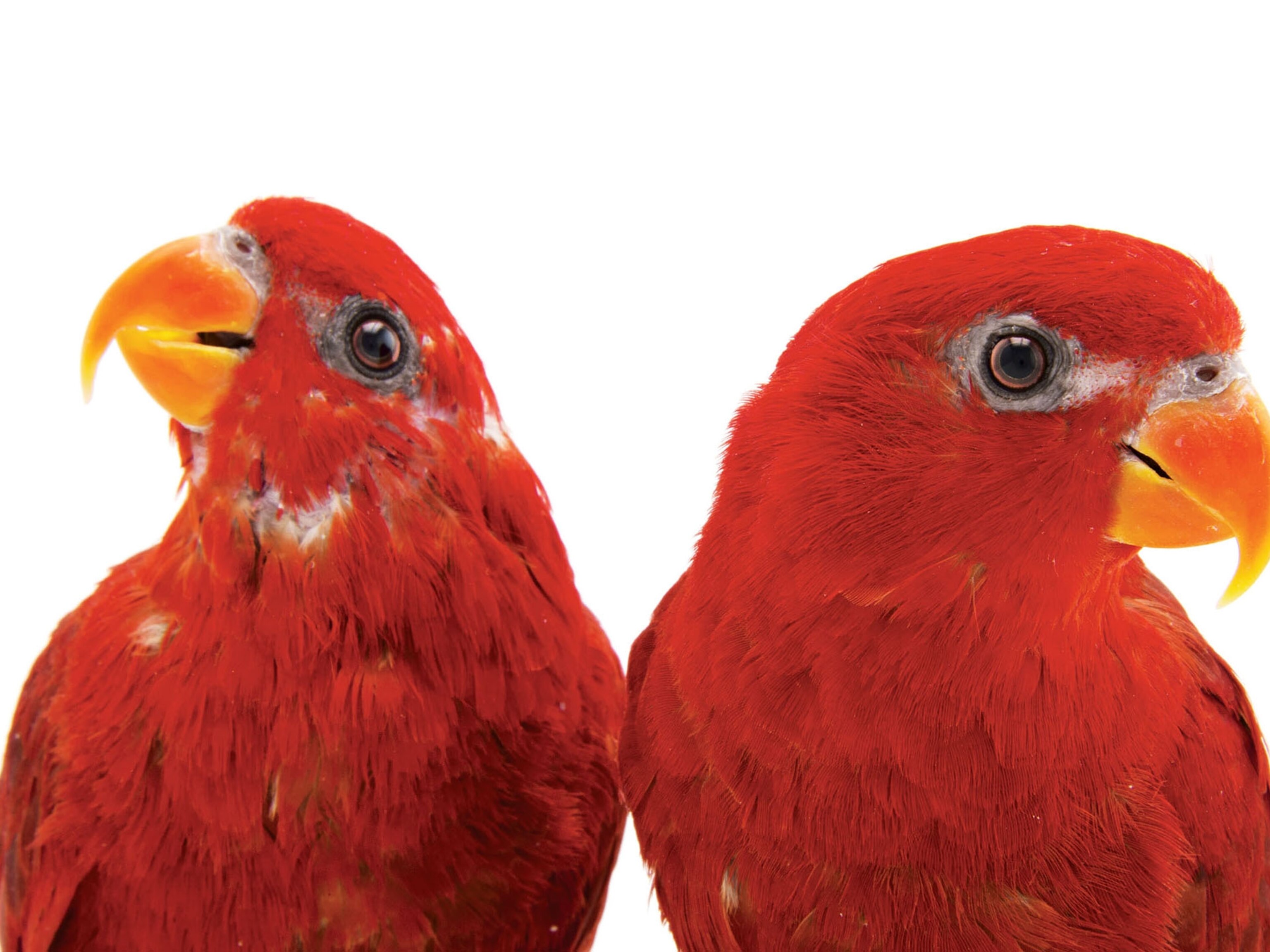
In October, wildlife rehabilitators at the New Mexico Wildlife Center took in a red-tailed hawk with puzzling injuries. The raptor’s wings, normally padded with thick, dark-brown feathers, were so badly burned that they looked skeletal. Its chest and head were also scorched.
“It kind of looked like it ran through fire,” says Hilary DeVries, a wildlife rehabilitator at the center, located in Española. Staff thought the male bird had been electrocuted, perhaps by a power line. But he lacked entry or exit wounds, lesions, or sores—all signs of such an encounter.
What burned the bird, as the New Mexico rescuers soon found out, was methane flaring, a federally mandated practice for disposing of methane, a potent greenhouse gas, in landfills across the United States. Landfills use a device called a methane burner to convert the gas into water and carbon dioxide, which traps less heat in the atmosphere than methane. But as the burner’s flames shoot out of a tall exhaust pipe, or stack, at heights of up to 30 feet, they remain colorless—and birds can fly directly into them without warning. (Read why three billion birds have been lost in North America since 1970.)
While the problem of burned birds, mostly birds of prey, is widespread—documented cases exist in dozens of states, including Oklahoma, Wisconsin, Massachusetts, New Jersey, and Colorado—there are no official counts of how many have been injured or killed. New Jersey’s cases have been more publicized, with several raptors treated at the state’s rescue centers.

The Raptor Trust, based in Millington, New Jersey, has cared for at least four red-tailed hawks exposed to methane flares in recent years, says executive director Chris Soucy. He calls methane gas injuries in birds “horrific”; although birds can regenerate most of their feathers through the process of molting, some are burned so badly that it can take them two years to heal. “That’s a really long time for a wild animal to be in captivity,” Soucy says.
Smaller birds that fly into the stack’s exhaust might be obliterated by the flames. Larger birds might survive the immediate impacts of their injuries, and fly away or stumble into brush. Often they go unnoticed by rescuers and eventually starve as they lose their ability to migrate and hunt, Soucy says.
“The unfortunate thing is we don’t have a great solution to it. We just understand the problem,” says Gary Siftar, director of the Oklahoma Raptor Center in Broken Arrow, which has seen about a dozen birds with methane burner injuries since 2005.
Other industries, such as oil and gas extraction, rely on methane flaring too, Siftar says—making it a “widespread issue” for birds.
‘Silently going on’
There are 2,627 landfills operating in the United States,according to the U.S. Environmental Protection Agency. The decomposition of organic matter in these landfills’ massive mounds of trash produces gas made up of about 50 percent methane and 50 percent carbon dioxide and other gases. Flaring is the preferred method to eliminate methane because carbon dioxide, a weaker greenhouse gas, is that method’s main byproduct, according to the U.S. Department of Energy. (Learn how a world without trash may be possible.)
Raptors are particularly susceptible to flare injuries, as they often perch on the methane burners to scan for prey below. Landfills also attract these birds because the sites can look like a grassy hill, an ideal hunting habitat that can be spotted from miles away, says Joey Mason, president of Keeping Company With Kestrels, a raptor-education nonprofit in Middleboro, Massachusetts.

During spring and fall seasons since 2012, Mason’s organization has documented birds of prey migrating through the nearby Carver Marion Wareham Landfill, where a red-tailed hawk was singed in 2010. They’ve recorded 435 birds from 2012 to 2019; mostly American kestrels, but also bald eagles, merlins, and red-tailed hawks. It’s unknown how many have been burned; in general, rescuers fear that only a small percentage of burned birds are discovered and taken to a rehab facility.
Wildlife biologist Rick Harness notes that many of the country’s landfills are in remote areas, where a hurt bird can be easily missed by people. “It’s something that’s silently going on,” yet there’s virtually no research being done on the topic, says Harness, who works for Colorado-based EDM International, Inc., an engineering consultancy.
According to Harness, methane flaring primarily harms red-tailed hawks—which have increased in population throughout much of North America since the 1960s—and great horned owls. Neither of those birds are currently listed as threatened or endangered—but that doesn’t mean we shouldn’t care, he says: “We just really shouldn’t be burning animals to death when we could be coming up with other solutions.” (Read why birds matter, and are worth protecting.)
Elusive solutions
Some landfills, such as Kingsland Landfill in North Arlington, New Jersey, have made efforts to protect birds.
In 2017, the landfill installed a large cage around their methane burner to protect birds from flying through flames, according to Brian Aberback, media representative for The New Jersey Sports and Exposition Authority (NJSEA), which oversees the site.
The cage was successful until this September, when a storm damaged the structure. Before it was fixed in October, three birds got through the cage to the flame, were injured, and could not be saved.
“Protecting the delicate balance of nature” is one of NJSEA’s mandates, Aberback says, adding that his organization began working with the U.S. Fish and Wildlife Service on potential solutions in 2010, when they found out that birds were injured by their methane flares.
Don Torino, president of the Bergen County Audubon Society in New Jersey, where the landfill is located, says caging methane burners is likely the only way to keep birds safe—but he doubts most landfills will install such a barrier. (Read how the U.S. produces more plastic trash than any other nation.)
Other suggestions include burying electrical lines to prevent birds from perching on utility poles near burners or building taller structures for the birds to alight away from the stacks.
As for the red-tailed hawk in New Mexico, he’ll likely be at the rehabilitation facility through winter, and longer if he doesn’t successfully molt in the spring. Still, rescuer DeVries thinks his prognosis is good, particularly because only his feathers were affected. “This bird was really lucky,” she says.
You May Also Like
Go Further
Animals
- Octopuses have a lot of secrets. Can you guess 8 of them?
- Animals
- Feature
Octopuses have a lot of secrets. Can you guess 8 of them? - This biologist and her rescue dog help protect bears in the AndesThis biologist and her rescue dog help protect bears in the Andes
- An octopus invited this writer into her tank—and her secret worldAn octopus invited this writer into her tank—and her secret world
- Peace-loving bonobos are more aggressive than we thoughtPeace-loving bonobos are more aggressive than we thought
Environment
- Listen to 30 years of climate change transformed into haunting musicListen to 30 years of climate change transformed into haunting music
- This ancient society tried to stop El Niño—with child sacrificeThis ancient society tried to stop El Niño—with child sacrifice
- U.S. plans to clean its drinking water. What does that mean?U.S. plans to clean its drinking water. What does that mean?
- Food systems: supporting the triangle of food security, Video Story
- Paid Content
Food systems: supporting the triangle of food security - Will we ever solve the mystery of the Mima mounds?Will we ever solve the mystery of the Mima mounds?
History & Culture
- Strange clues in a Maya temple reveal a fiery political dramaStrange clues in a Maya temple reveal a fiery political drama
- How technology is revealing secrets in these ancient scrollsHow technology is revealing secrets in these ancient scrolls
- Pilgrimages aren’t just spiritual anymore. They’re a workout.Pilgrimages aren’t just spiritual anymore. They’re a workout.
- This ancient society tried to stop El Niño—with child sacrificeThis ancient society tried to stop El Niño—with child sacrifice
- This ancient cure was just revived in a lab. Does it work?This ancient cure was just revived in a lab. Does it work?
Science
- The unexpected health benefits of Ozempic and MounjaroThe unexpected health benefits of Ozempic and Mounjaro
- Do you have an inner monologue? Here’s what it reveals about you.Do you have an inner monologue? Here’s what it reveals about you.
- Jupiter’s volcanic moon Io has been erupting for billions of yearsJupiter’s volcanic moon Io has been erupting for billions of years
- This 80-foot-long sea monster was the killer whale of its timeThis 80-foot-long sea monster was the killer whale of its time
Travel
- This town is the Alps' first European Capital of CultureThis town is the Alps' first European Capital of Culture
- This royal city lies in the shadow of Kuala LumpurThis royal city lies in the shadow of Kuala Lumpur
- This author tells the story of crypto-trading Mongolian nomadsThis author tells the story of crypto-trading Mongolian nomads







